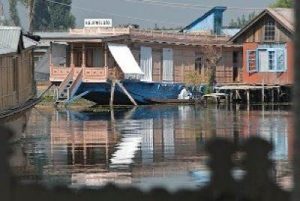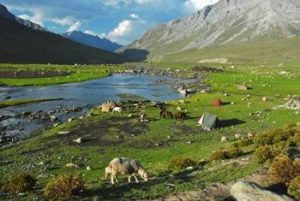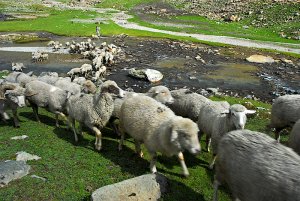Tours in Kashmir
Tours in Kashmir
About the Tours in Kashmir
Kashmir can be visited almost all year round, at least for houseboat stays and jeep tours. Winters can get chilly, but from March onward weather tends to be very pleasant. Apart from relaxing at a houseboat on Dal Lake or Wular lake, and floating around in shikaras, you can make car trips to the ‘hill stations’ of Gulmarg, Yusmarg, Pahalgam and Sonamarg, to name a few. There you’ll find beautiful mountain scenery, which you can explore on foot if you like.
For trekking, summer is the best time, but late spring and early autumn are still okay for treks at medium altitudes. Some of the lower elevation treks can be done as early as May, the more serious ones from mid-June onwards.
Tours
Treks & Walks
Short Stays
ABOUT Kashmir

At the cross-roads of the Indian, Tibetan and Central-Asian realms, Kashmir seems ideally situated to play a major role in international trade. With fertile soil, no shortage of water or wood and a pleasant, temperate climate, ideal for any crop, be it apples, vegetables, saffran or rice, it can take care of itself easily as well.
But all these advantages have attracted so many suitors that Kashmir hardly ever in history was ruled by Kashmiris. Even today it is ‘disputed area’, governed by India, coveted by Pakistan and – so it seems – not completely sure what it wants itself. After the uprising of the nineties things are getting quiet again in the pretty valley, and the Kashmiris are getting back to business, which is for most: tourism. Since a couple of years, Indian tourists are flocking in again. Foreigners are following, though still hesitantly. This seems to be a better time than ever to enjoy the relative quietude of, especially, the mountains around The Valley. While trekking up from Pahalgam or Sonamarg you may have the mountains to yourself. Ever popular Gulmarg is different, of course, as it always has been. Go there for cable car rides, skiing, etc. But don’t forget to allow for at least three days of floating on the lake, either gliding through the maze of canals, floating and non-floating gardens, and visiting local markets. But you don’t need to go anywhere, really. Enjoying this unputdownable book on the front balcony of your houseboat, watching the birds and the quiet water traffic, is probably as close as you can get to a truly relaxing holiday experience.
MOGHUL GARDENS & FLOATING BRITISH COTTAGES
One of the suitors of the attractive valley was Shah Jehangir (or Jahangir). One of the Moghul emperors, originally hailing from Afghanistan, he probably never completely felt at ease in Delhi, let alone further south on the Indian subcontinent that the Moghuls conquered. Kashmir was closer to home and much closer to his ideas of paradise. So he spent his summers here among his muslim brethren,

shaping the already idyllic landscape into something even more to his liking. Thus, the famous Moghul gardens around Dal Lake were created. Much later, the British acted similarly.
To escape the summer heat in Delhi they moved annually to hill stations like Shimla. At the time, Kashmir was not part of (British) India, but an independent ‘princely state’, where the Brits were not allowed to own land. Ever inventive, they designed floating cottages for their summer holidays. The Kashmiri houseboat, (originally) with its pointed roof and victorian designs, was born.
HIGH UP – INTO THE HIMALAYAS
Hardly touched by Moghuls or Brits, the mountains of Kashmir remain what they’ve always been: lush green and heavily forested in most places, but surprisingly rough, jagged and forbidding at the higher altitudes. The contrast with the evergreen Valley is striking if not unsettling. Clearly, in the international image of Kashmir the idyllic part has won. But the truth is: for serious mountaineering one needn’t go to Pakistan or Nepal. Kashmir’s backyard, after all, is the Great Himalayan Range itself.
For those who don’t need ropes and ice axes to enjoy the mountains, there are endless high trails to walk down (and up), leading you to the flowering alpine meadows that feature in Hindi movies, isolated hamlets with friendly locals and picture-perfect mountain vistas atop high passes.Some of these passes lead into another world all together: Ladakh.

In the eighties and early nineties we used to cross them every year, as these are among the most rewarding treks in the Himalayas. Let’s do them again!





